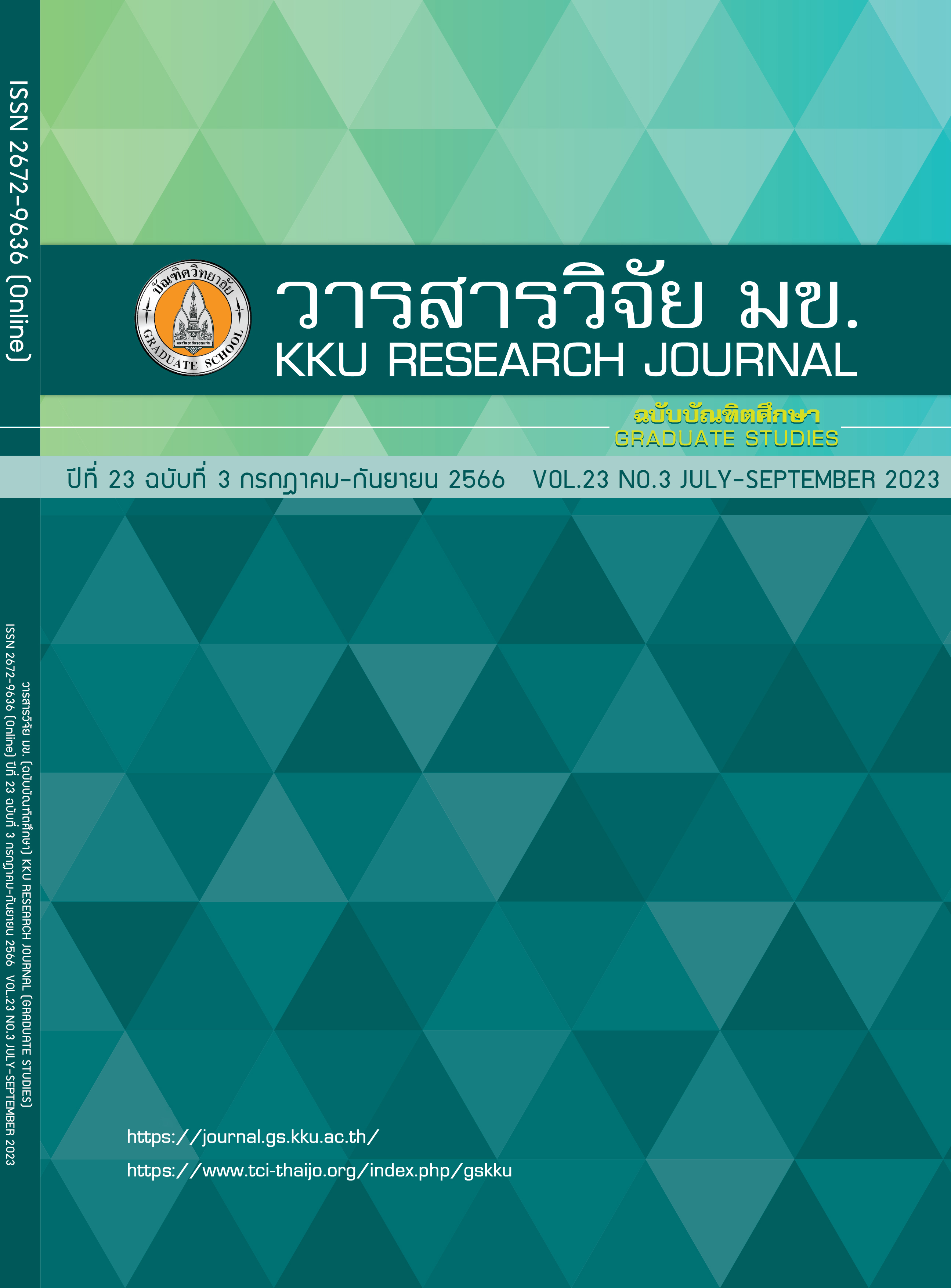The Physical Modeling of Compacted Khon Kaen Loess and The Finite Elements Analysis by Plaxis 2D Under Dry and Wet Conditions
Keywords:
Stress Distribution, Stress Bulb, Khon Kaen Loess SoilAbstract
Khon Kaen loess is a wind-blown deposit, which is a cause of loose structure and is mainly classified as silty sand (SM) or clayey sand (SC). The Bearing capacity of Khon Kaen loess is very high in dry conditions but is low under wet conditions. Moreover, Khon Kaen loess collapsed under wetting conditions. Soil has to stand under the loading and not be excessive of settlement according to standards to design the foundation. The stress bulb must be known to estimate soil settlement under the foundation. Therefore, this research investigated the increasing stress with the depth of compacted Khon Kaen loess under wet and dry conditions in the laboratory. Then the results from the laboratory were compared with finite elements to estimate the settlement of Khon Kaen loess under the foundation. The physical modeling was studied according to a plate bearing test and used earth cell pressure to measure the stress distribution under the foundation. The test result found that the stress under the foundation varied with the applied load. Moreover, there was no failure under dry compacted Khon Kaen loess after applying the maximum designed pressure (196.2 kPa). However, wet Khon Kaen loess failed at a pressure of 110.36 kPa. The stress bulb of wet and dry Khon Kaen loess showed that the stress was distributed in wet rather than dry conditions. Besides, the result of physical modeling did not get along with the 2 to 1 stress distribution theory. There is still a significant discrepancy with the theory because the soil properties in the test do not match the assumptions of the theory. However, the analysis from the finite element (Plaxis 2D program) using variable values from the study of the relationship between matric suction, degree of saturation, and the shear strength of Khon Kaen loess soil found that the results were similar to the physical modeling. Hence, the settlement of Khon Kaen loess can be estimated using the finite element with the proper shear strength parameters.
References
Jeffrey A. Farrar. The pressure bulb of stress distribution. Foundation Investigations for Structures. 2004.
Terzaghi K. Theoretical soil mechanics. New York: John Wiley. 1943.
Klukanova J, Frankovska A. Mechanisms of collapse of soil structure. Journal of African Earth Sciences. pages 149-172. 1995.
Punrattanasin P, Changjutturas K. The behavior of shallow foundation on loess subsoil from physical modeling. KKU Research Journal, 7(1), 48-56. 2007.
Saengthongthip A. Shear strength of compacted Khon Kaen loess by direct shear test and unconfined compression test. Khon Kaen: Khon Kaen University. 2019.
Chatchawan S. Drain shear strength of unsaturated compacted loess by multistage triaxial test. Khon Kaen: Khon Kaen University. 2019.
Brent T, Labuz JF, Dai S. Field Installation of an earth pressure cell. U.S.A.: Department of Civil Engineering, University of Minnesota. 2001.
Plate Bearing Test 1253-62. Department of public works and town and country planning. 2019;1-24.
Bezuijen A. and Ahmadi A. Full-scale mechanically stabilized earth (MSE) walls under strip footing load. Belgium: Ghent University. 2018.
Lazzarin F. Measurement of soil stresses in small scale laboratory model tests on granular soils. [n.p.]: School of Engineering Department of Civil, Building and Environmental Engineering. 2015.
Downloads
Published
Issue
Section
License
Copyright (c) 2023 KKU Research Journal (Graduate Studies)

This work is licensed under a Creative Commons Attribution-NonCommercial-NoDerivatives 4.0 International License.



